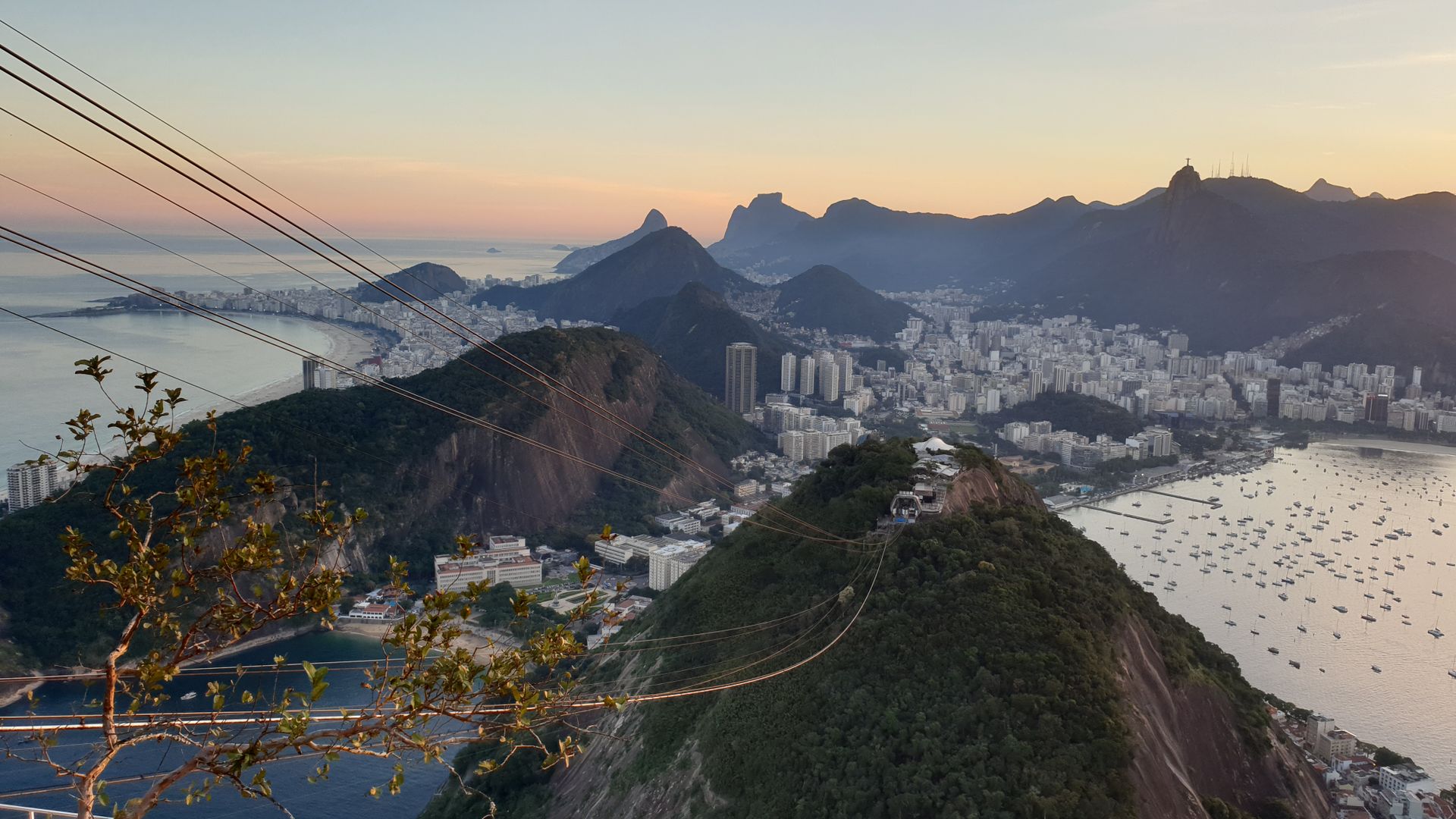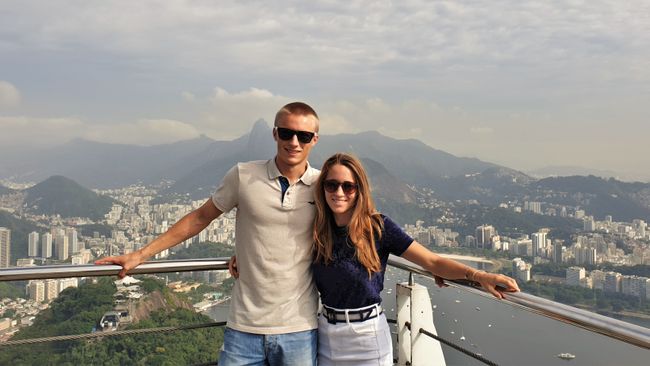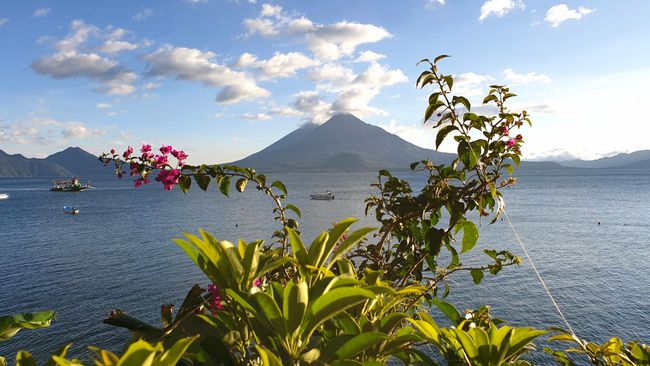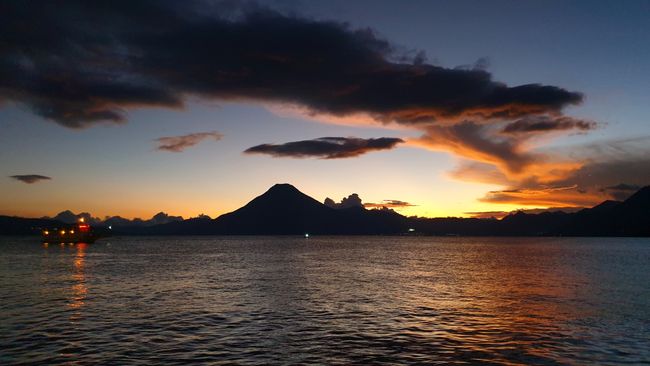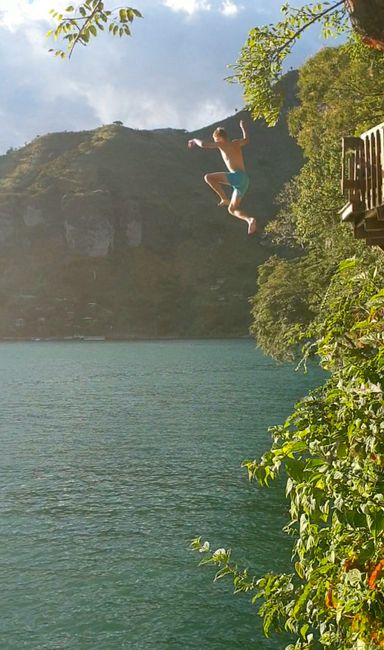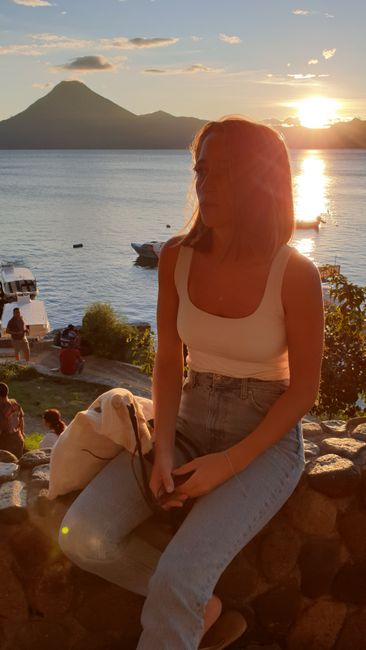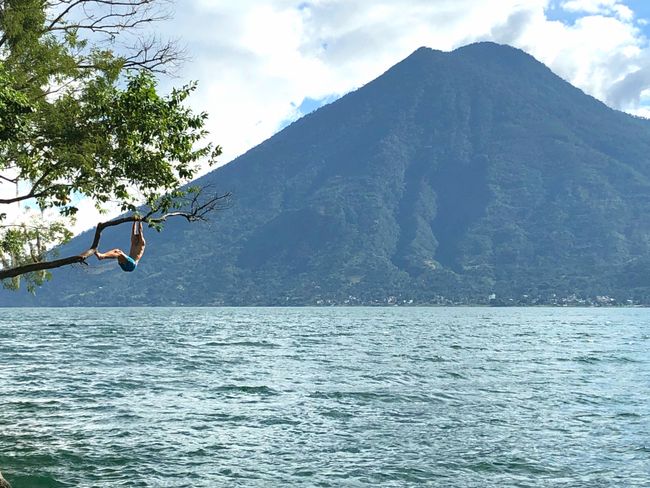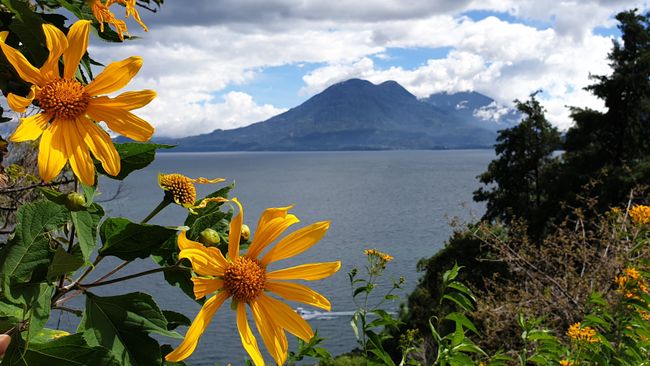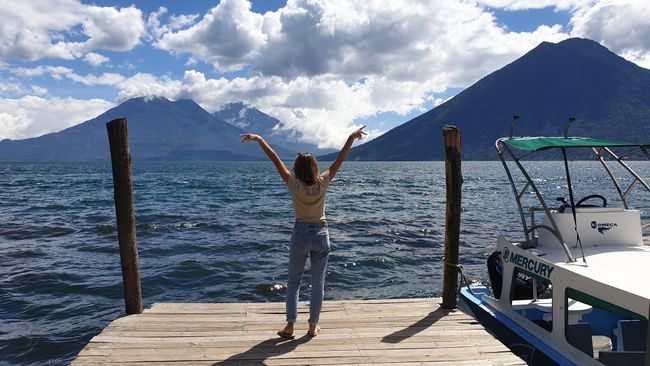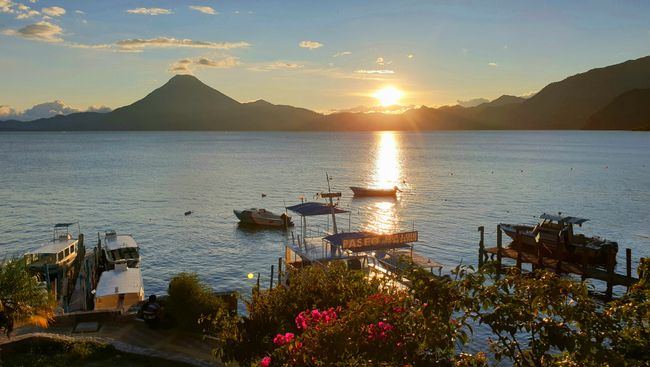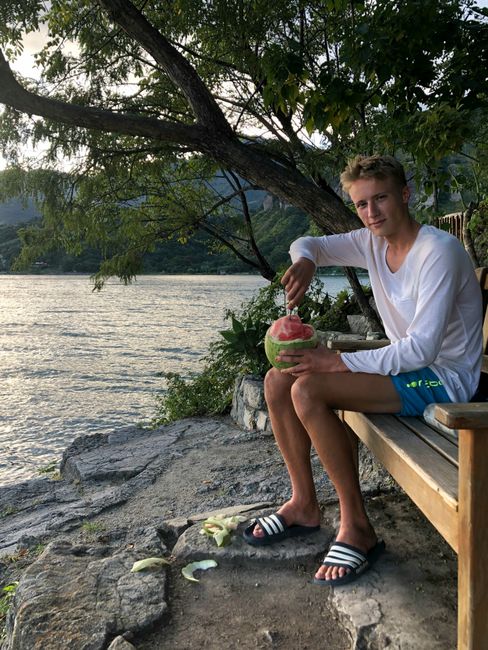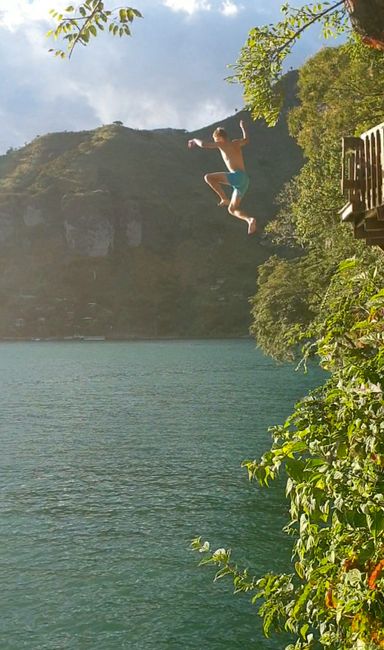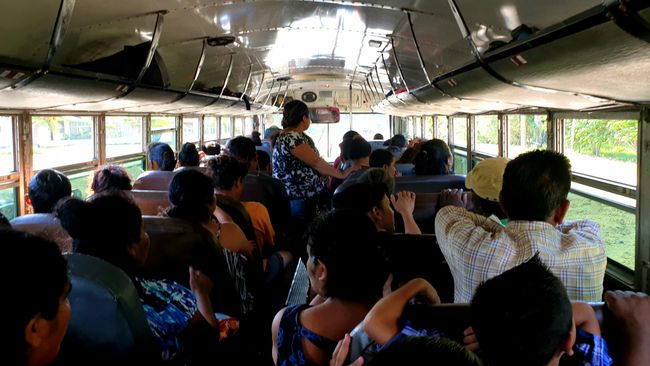Guatemala #5 - Lake Atitlán
បោះពុម្ពផ្សាយ: 20.12.2019
ជាវសំបុត្រព័ត៌មាន
Lake Atitlán
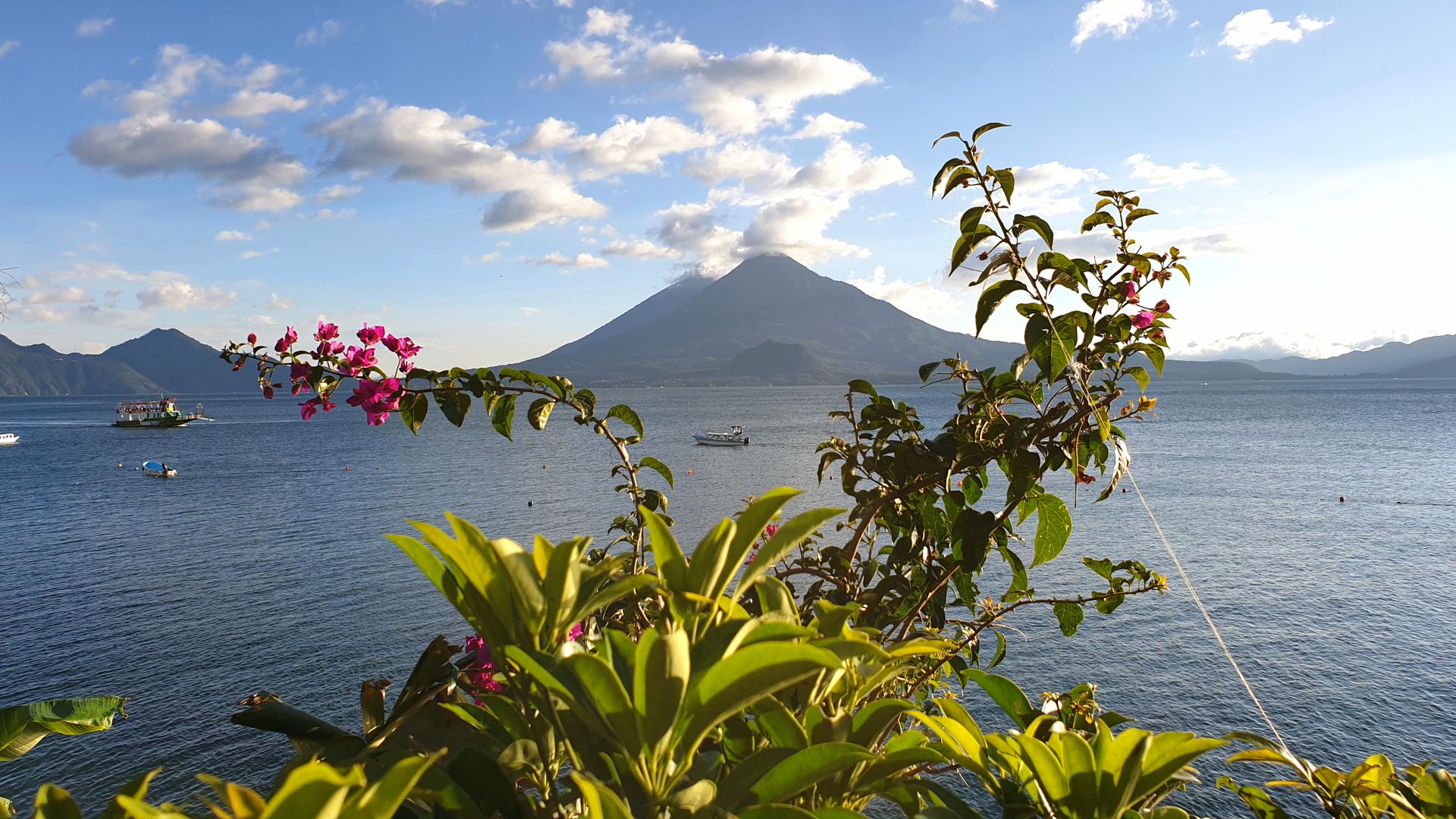
The famous Lake Atitlán was both our last stop in Guatemala and the westernmost point of our journey.
The lake, located in a giant crater, is complemented by the three volcanoes that surround it, creating a picturesque landscape.
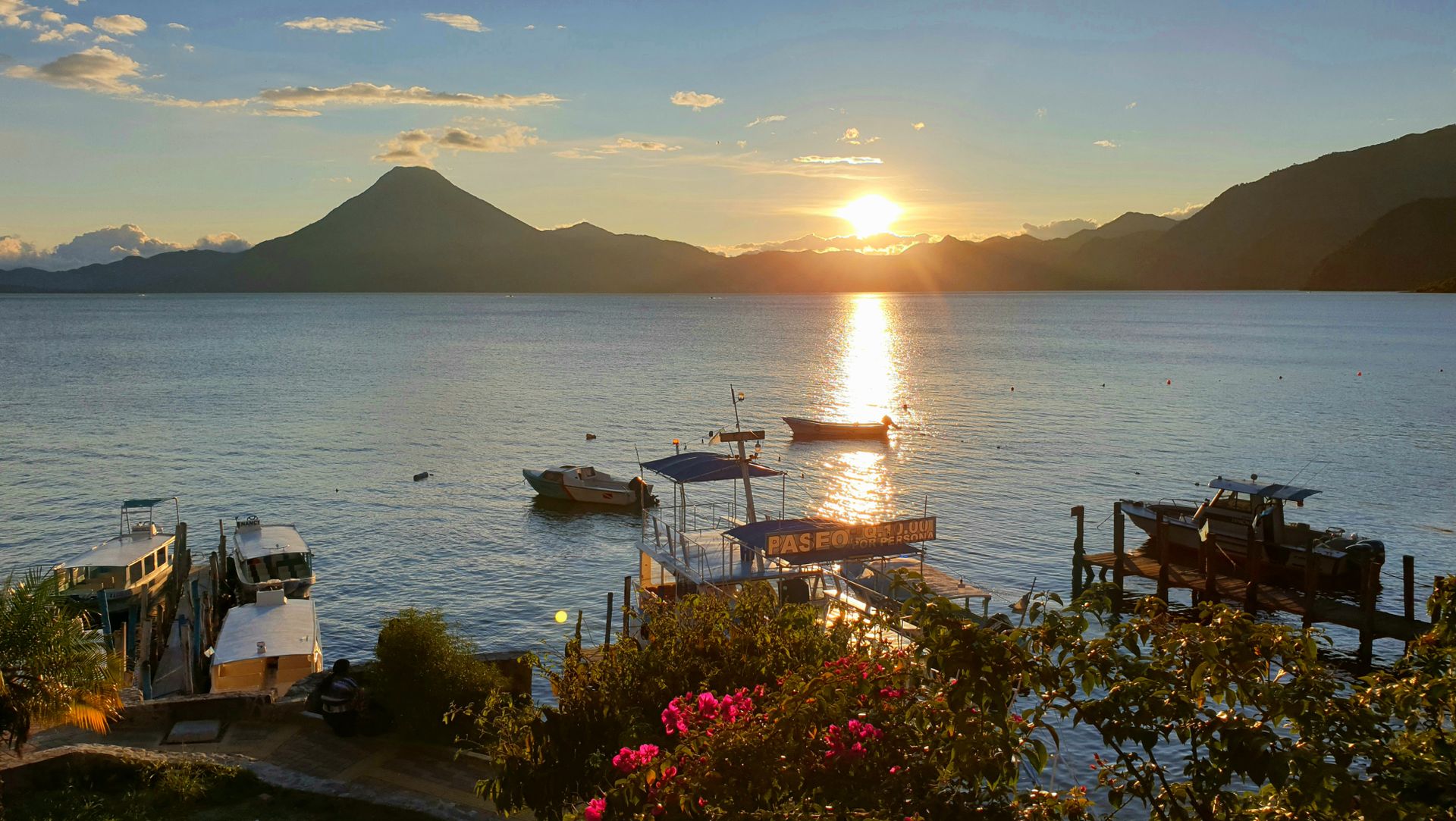
The arrangement of the mountains creates narrow coves around the lake, on which small villages climb up the slopes. Each village seems to have its own character, some of which are only accessible by boat.
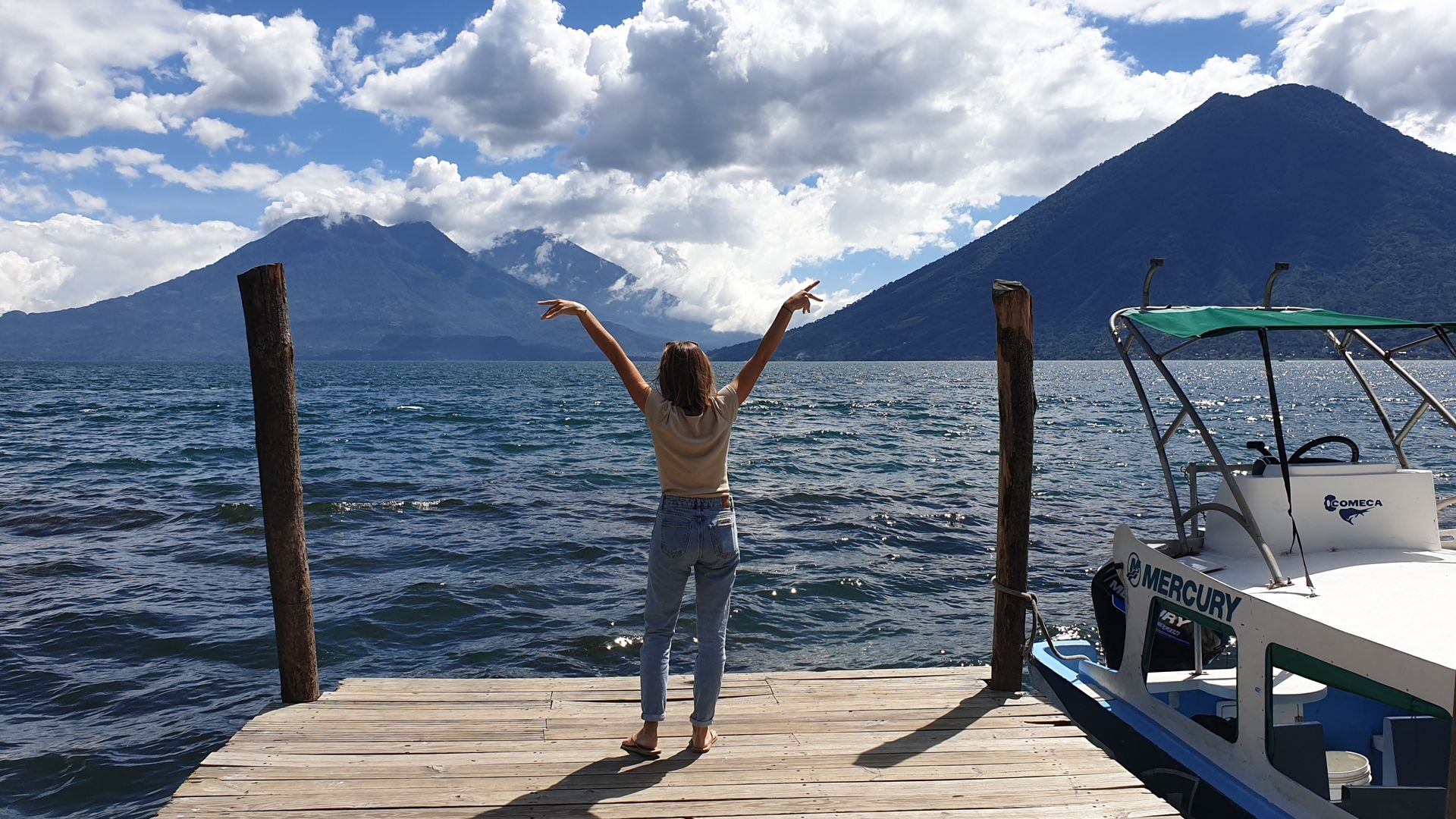
The majority of the area around Lake Atitlán is inhabited by Maya people, but word has spread about the idyllic scenery the lake offers. Along the shoreline, you can see stylish homes and vacation houses with large glass windows reflecting the setting sun. We have also heard numerous stories of travelers who originally intended to stay for only a few days but never wanted to leave Lake Atitlán.
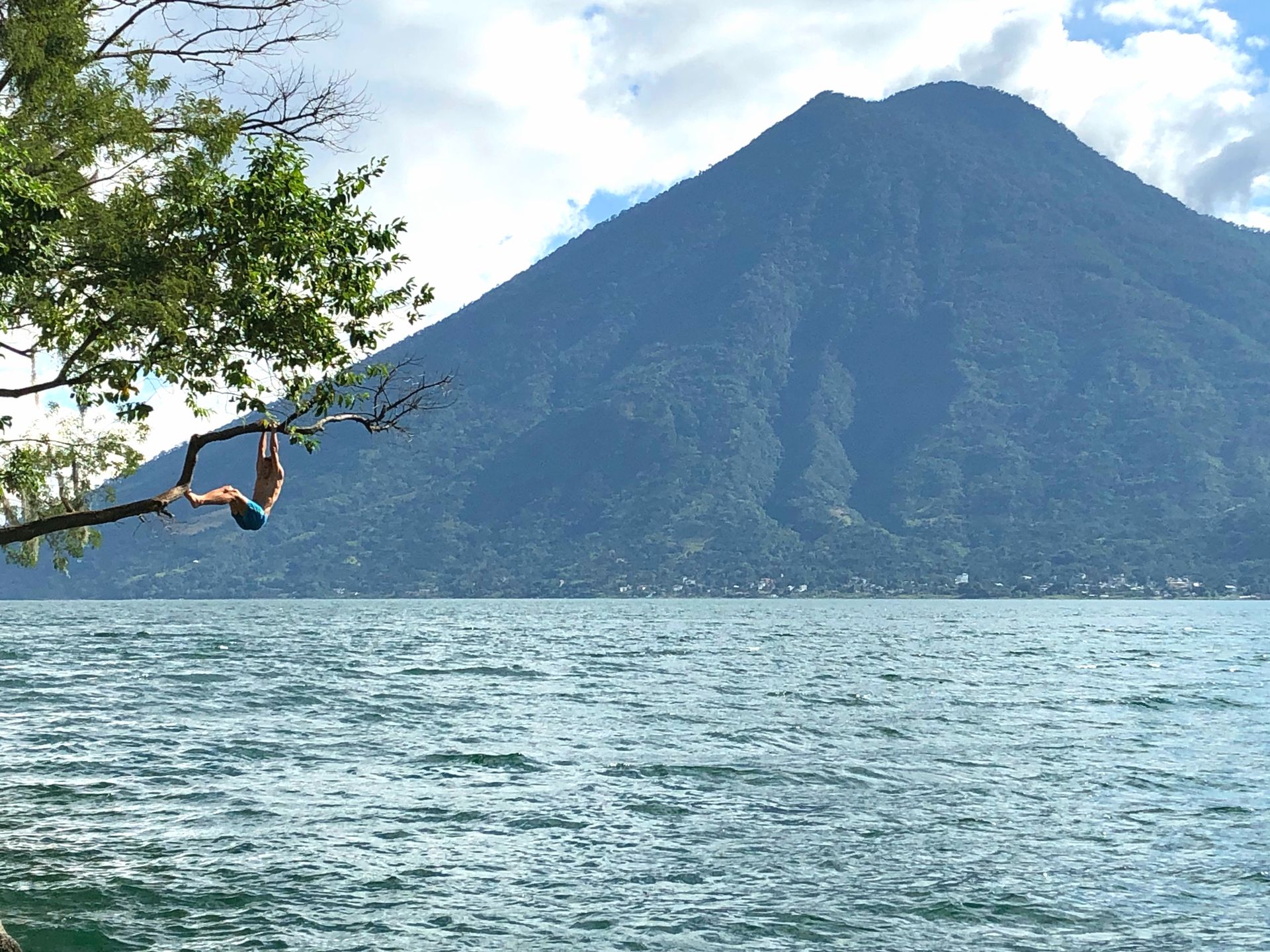
After encountering many dense clouds in Guatemala, we were welcomed by the sunny and pleasant climate of the lake, located at an altitude of about 1500 meters. Combined with the refreshing water temperature, the weather reminded us of the beginning of summer in Germany.
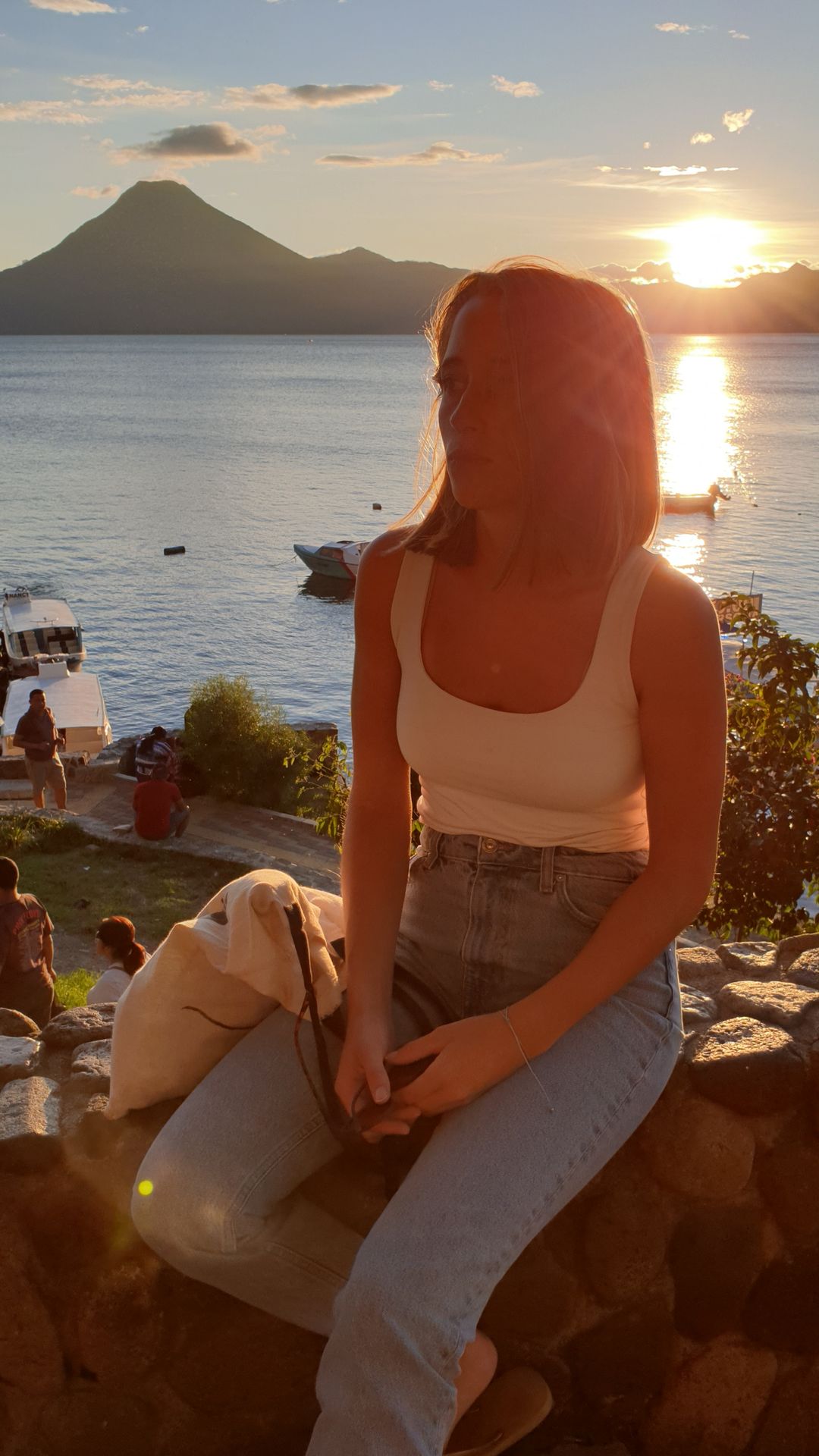
We adapted to the idyllic scenery here and took our days very relaxed. Equipped with fresh fruit, we took a boat to the village of San Marcos. There is a park directly on the lakeshore, which offers various viewpoints, relaxation spots, and swimming opportunities. When we weren't relaxing by the lakeside or working on documenting and planning our trip, we could jump directly into the cold water from a 12-meter-high platform and trees. We enjoyed it so much that we decided to spend the next day in the same way.
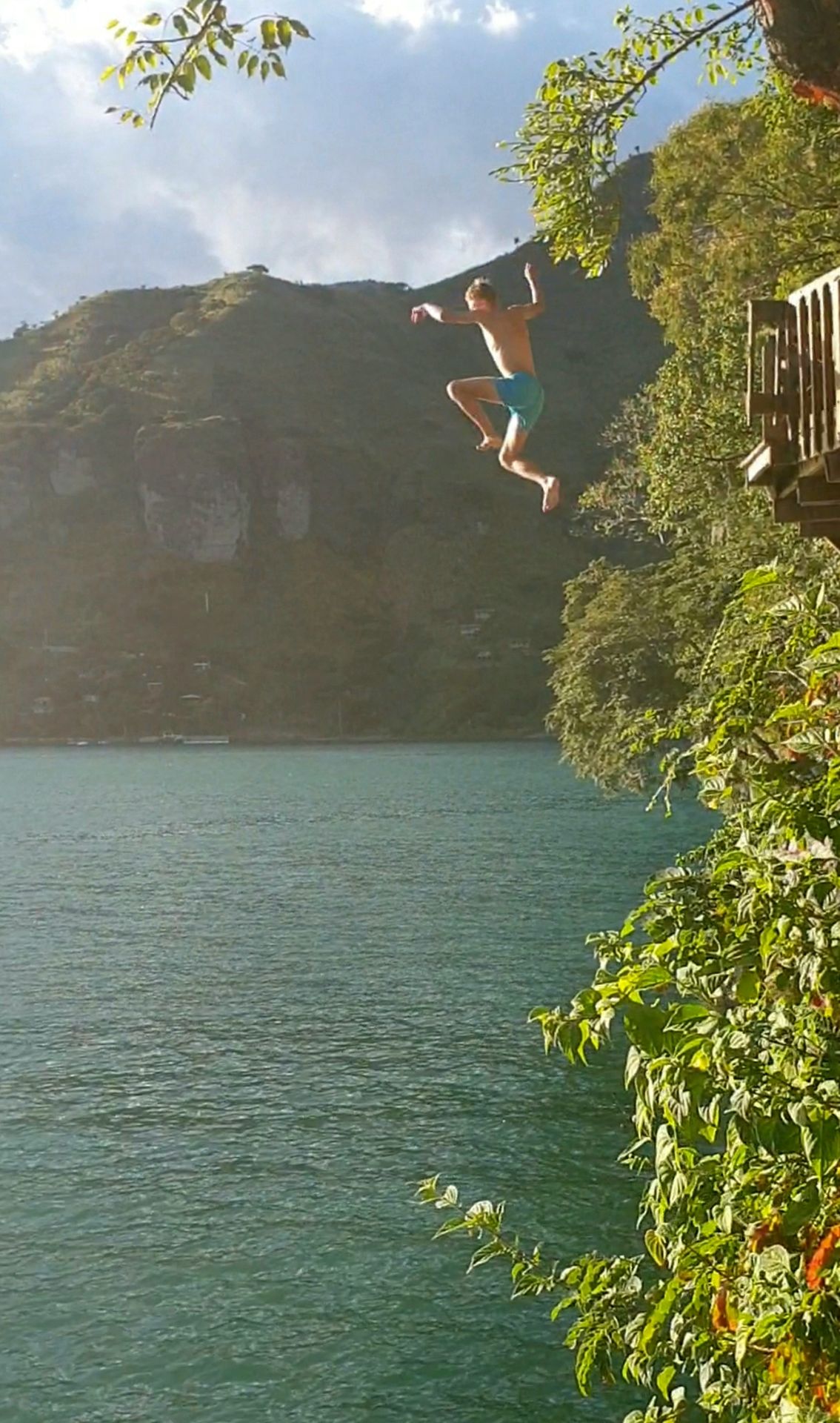
Every evening, the setting sun beautifully illuminates the lake and the three surrounding volcanoes Tolimán, Atitlán, and San Pedro. We really enjoyed Lake Atitlán. But don't worry, after four days, we managed to continue our journey...
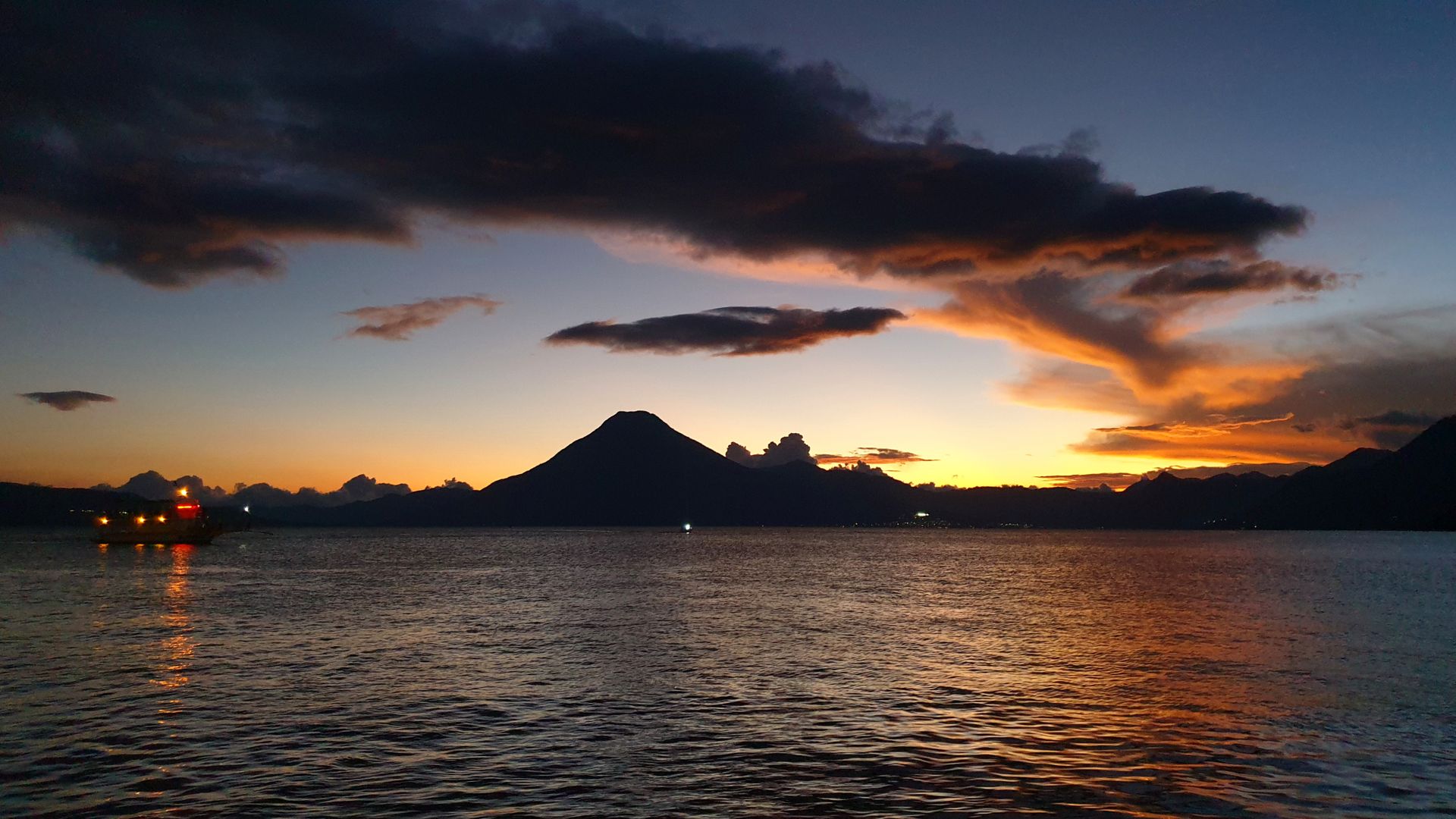
The Chicken Bus Myth
Throughout Central America, you can find retired "Blue Bird" school buses, also known as "chicken buses". These creatively modified cultural objects are known less for comfort and more for adventurous rides at affordable prices.
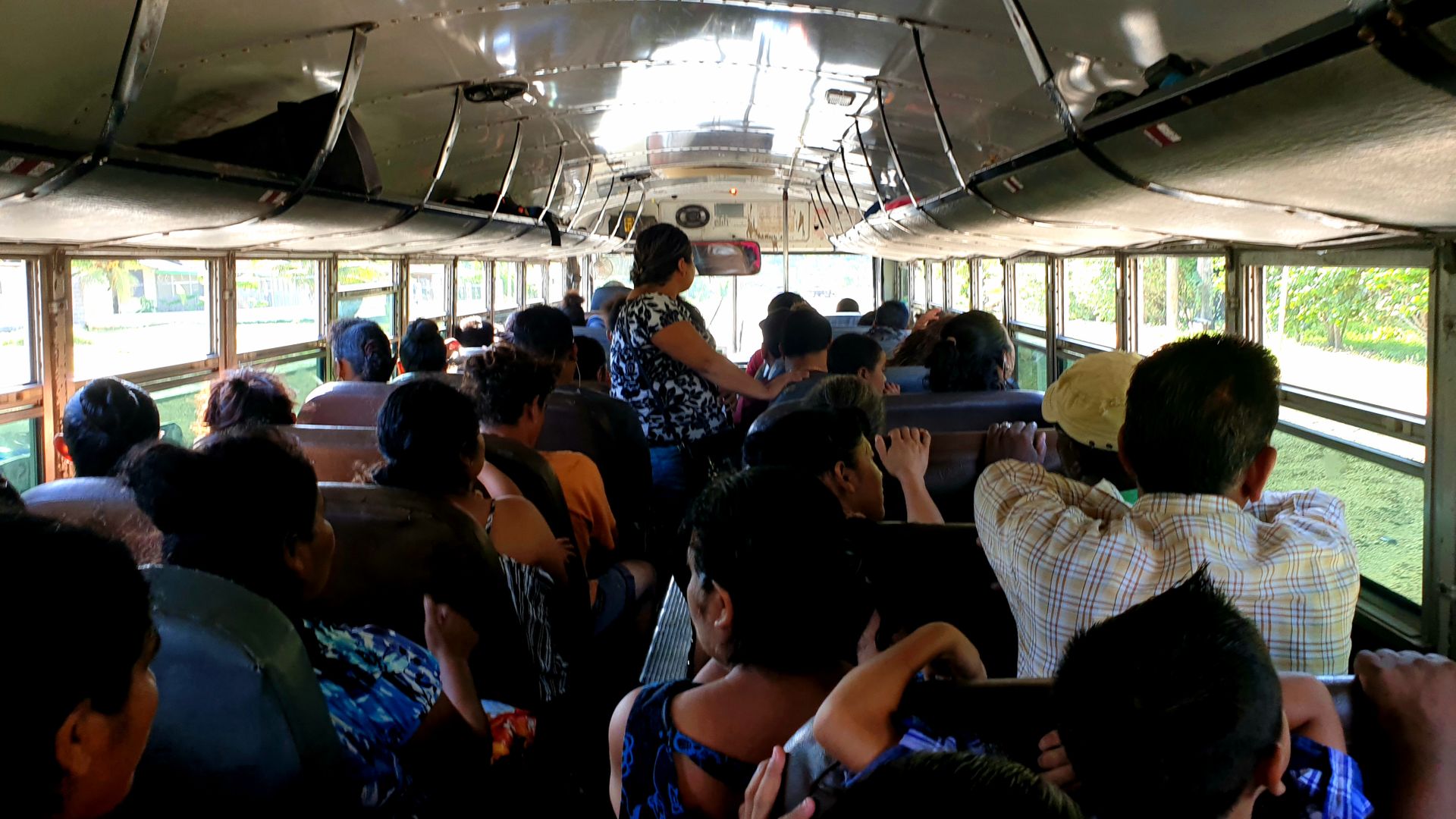
Racing through the streets, these colorful vintage buses, adorned with both religious and provocative inscriptions, seem to be in a constant race against time. Contrasting with the religious inscriptions, loud reggaeton music blares from tinny speakers, accompanied by honking and LED light effects. No, these buses are hard to miss and even harder to ignore.
In addition to this "ordinary madness", we have had other particularly exciting experiences here in Guatemala. Those who forego expensive tourist shuttles and opt for local buses or races are in for an adventurous ride. As soon as you step onto the bus, the accelerator is pressed to the metal, and the laws of physics and all traffic rules seem to be suspended.
The two-lane road is clearly interpreted as a double lane from both directions: as long as you can't clearly read the license plate of oncoming traffic, there is no reason to return to your own lane. It is still a mystery to us how such athletic driving maneuvers are possible with these bulky buses.
Especially the curves are taken in race car fashion: the engine screams, the tires squeal. Like balls on an abacus, passengers slide from right to left, from left to right. Since the routes here consist mostly of curves, there is no need to apologize anymore for constantly sliding into your seat neighbor; physical closeness is included in the fare.
Conclusion about Guatemala
As mentioned before, Guatemala is home to the highest peaks in Central America and is therefore extremely fascinating in terms of landscapes. That is why Guatemala, despite having coasts on the Pacific and the Caribbean, was the only country on our journey where we were not by the sea.
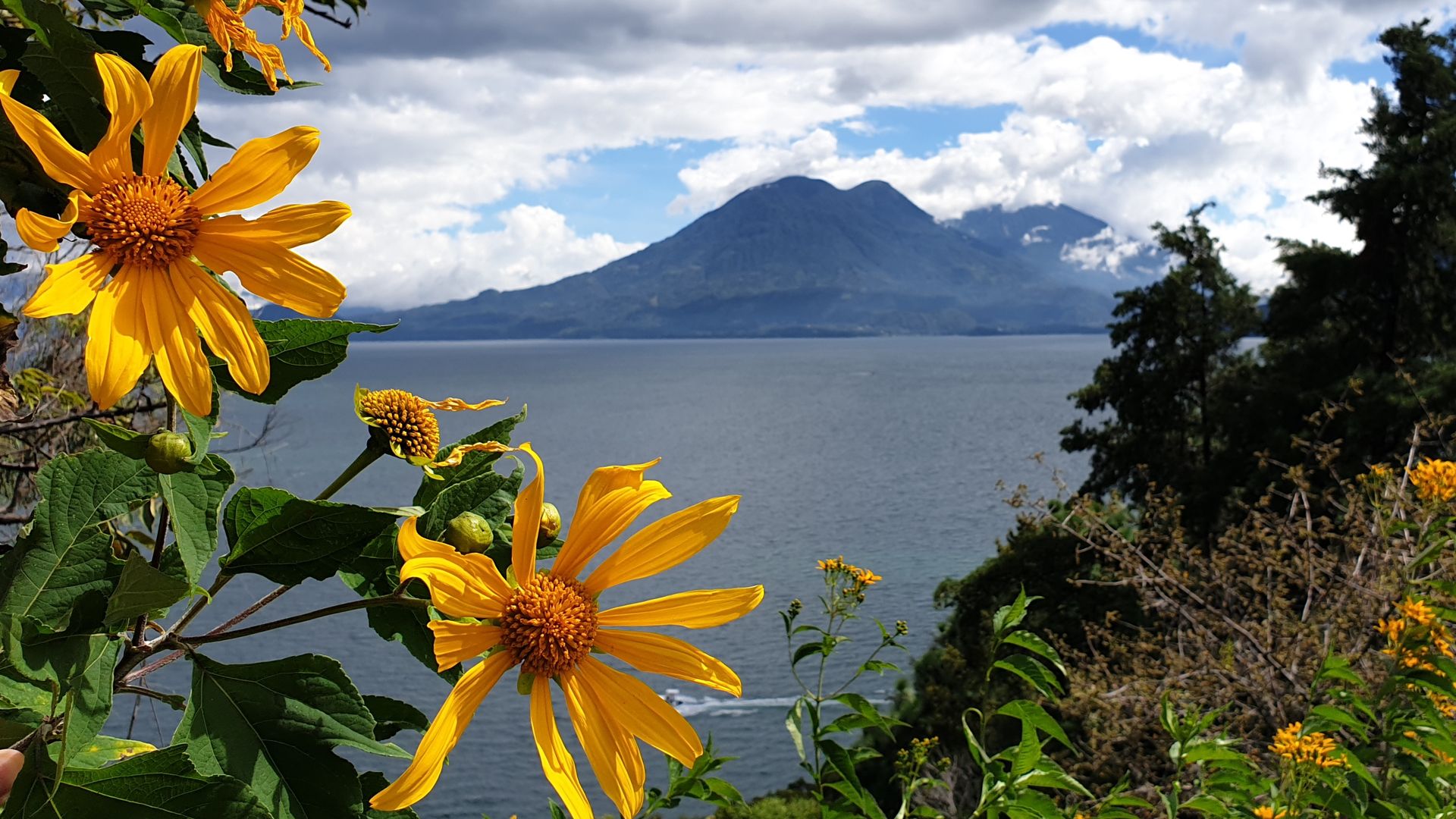
Although Guatemala is not one of the most well-known travel destinations, well-trodden tourist paths can be found here. Due to the topography, the routes between tourist attractions can be arduous, which is why many travelers opt for expensive shuttle buses. Thus, Guatemala was more expensive than we expected, and we spent more money here in a comparable amount of time than in Mexico.
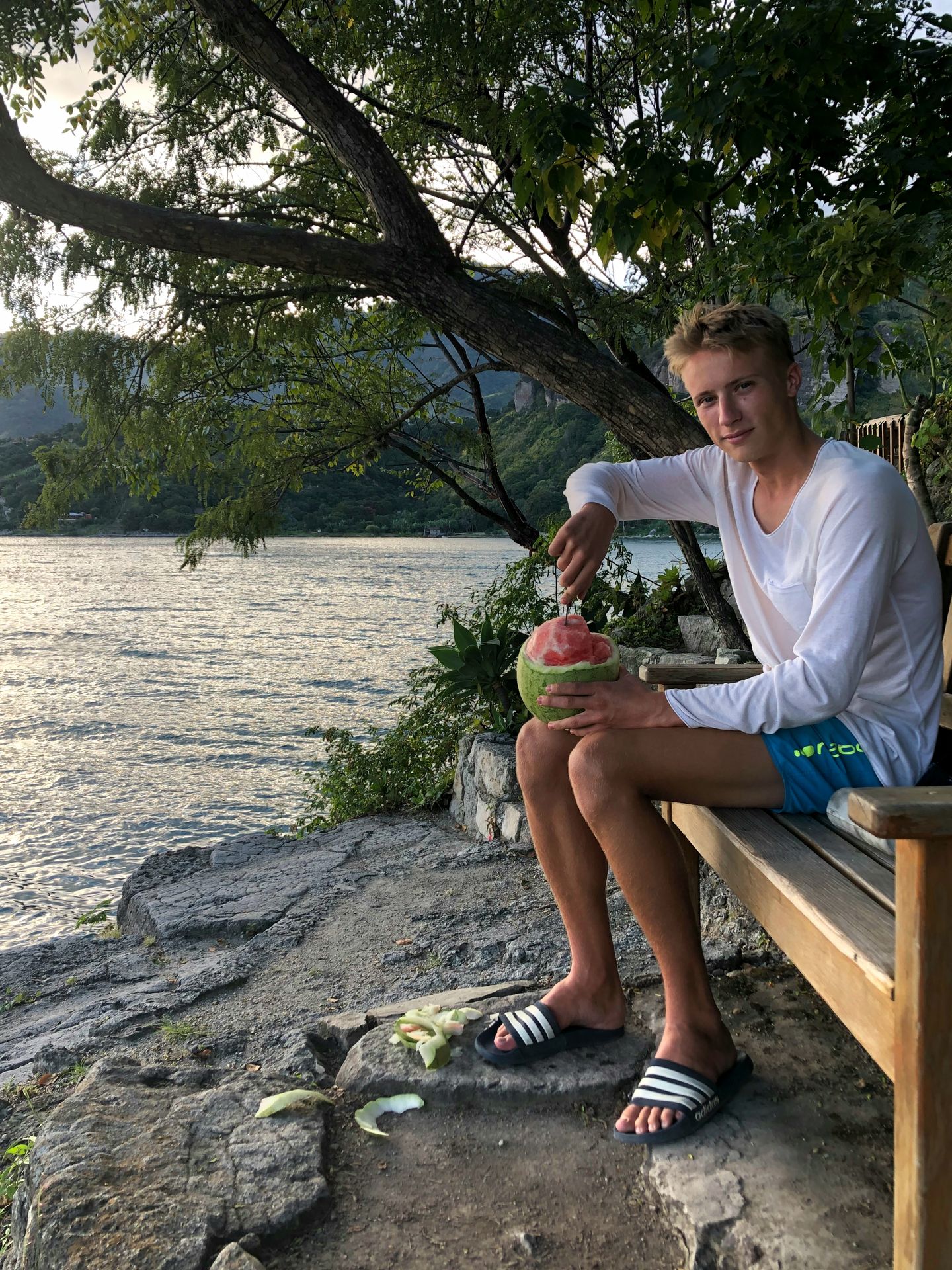
We cannot determine whether Guatemala was historically the "heart of the Maya world". However, we have experienced the Maya heritage here, especially off the beaten tourist paths in the lives of the rural indigenous population. And we got to explore the mysteries of the Maya in Tikal in a mystical way.
Nos vemos en El Salvador!
Saludos,
D&J
ជាវសំបុត្រព័ត៌មាន
ចម្លើយ
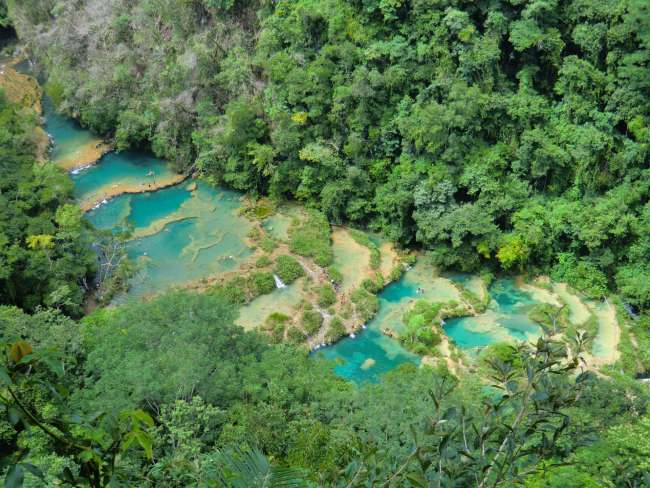
របាយការណ៍ធ្វើដំណើរ ហ្គាតេម៉ាឡា
